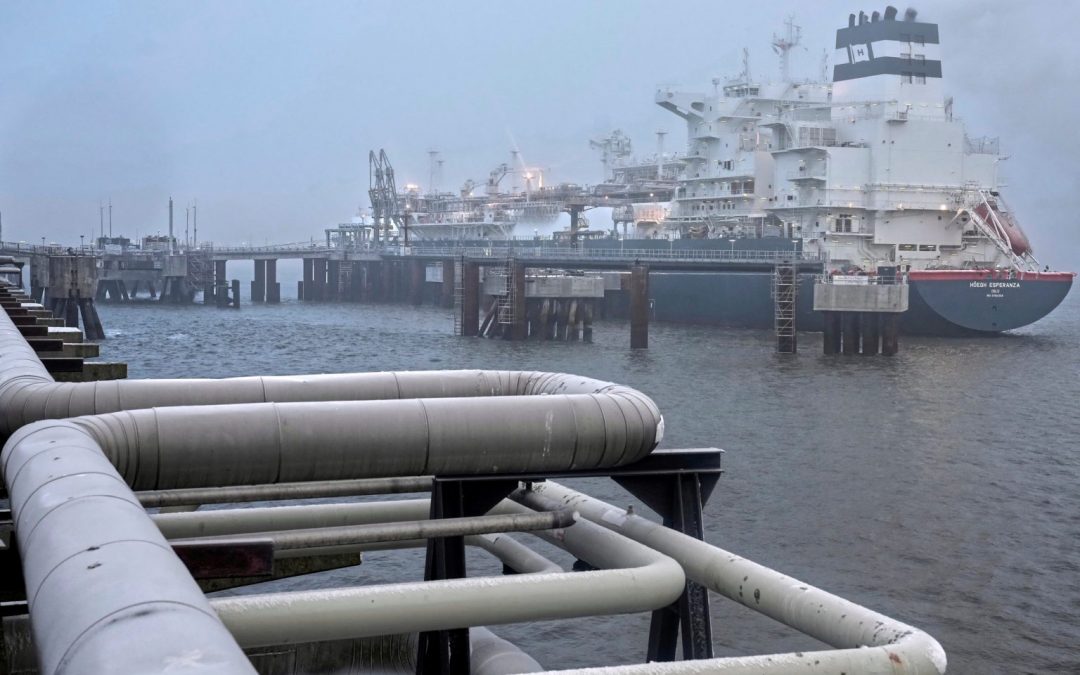Weak spot LNG prices globally have sparked spot buying interest in India and the Middle East, attracting selling interest from West African and US LNG sellers, sources told S&P Global Commodity Insights.
As of Feb. 16, the arbitrage window between the US and the JKTC (Japan, Korea, Taiwan, China) region was marginally closed with the H1 April JKM/H2 March NWE spread versus the USGC to North Asia via Cape of Good Hope/Northwest Europe freight rate marked at minus 18.3 cents/MMBtu, data from Platts, part of S&P Global, showed.
However, traders said arbitrage opportunities for Atlantic cargoes to flow into the Middle East and India were present as the freight route costs for bringing Atlantic cargoes into those areas were more competitive than the JKTC region with higher demand for spot cargoes relative to Europe.
“We are seeing many offers in the market and players wanting to divert their US cargoes from Europe to the Middle East and Indian regions to capture JKM-linked prices,” one trader said.
US LNG exports to India in February stand at 210,000 mt as of Feb. 21, which was around 91% of the levels seen last month, according to data from S&P Global. So far, this stands below the 290,000 mt seen in February 2023, but above the 140,000 mt in February 2022.
Sources forecast exports to India this month to overtake levels from last month and surpass February 2023 levels.
Traders want to divert cargoes out of Europe due to weakness in the Northwest Europe prices, another trader said, adding that delivering to Northeast Asia would mean an additional 20 days.
The West India Marker, the price of LNG cargoes delivered to the west coast of India, was assessed at $7.988/MMBtu on Feb. 20 whereas the Northwest Europe Marker was at $7.115/MMBtu, according to Platts data.
The cost of freight from the US Gulf Coast to India around the Cape was assessed at $1.61/MMBtu while to NWE it was 65 cents/MMBtu.
The JKM/WIM spread which was nearly 20 cents/MMBtu in the week ending Feb. 16, climbed to 30.3 cents/MMBtu on Feb. 20 with traders expecting more upward movement in the spread due to offers being made for DES India.
“The shipping in the Middle East and India is at a premium due to the Red Sea issues and owners not wanting to reposition their ships for spot voyages only,” a Middle East-based trader said.
The JKM/WIM spread had the potential to move higher to as much as 50 cents/MMBtu if freight costs rise, with the price spread between Europe and India incentivizing more people to offer cargoes to the Middle East and India as against Northeast Asia, one trader said.
West African selling interest
Traders see favorable netbacks for selling into India incentivizing more offers out of West Africa, with more cargoes being seen offered out of Nigeria toward India.
“West Africa and East Africa make sense to go to India, there is no debate,” a Europe-based LNG trader said. “Demand from China is there but they are not super active really, India has a spot tender, and they seem to be growing in demand.”
Several sources added that for now, with weaker flat prices, buyers in India are incentivized to purchase LNG cargoes on the spot market to fuel power generation demand and refinery needs. While the arbitrage is shut to Asia it is open to India.
The European source added that the trip to India from West Africa “is less days and [while it is] not huge demand there, it makes sense to ship to India where the netbacks are better.”
While some sources argued that the US-India arbitrage is closed, they agreed that the WAF-India arbitrage is open, with exports out of Nigeria to India this month expected to surpass volumes seen last month.
“Almost all the West African flows are heading east since January,” a trading analyst. “Mostly to India, yes, but gas-to-power is not that big especially in this season, so it’s all sectors really.”
Nigerian exports of LNG to India in February stood at 140,000 mt, around 93% of the levels seen last month, according to data from S&P Global. This was higher than the 130,000 mt seen in February 2023 and the 60,000 mt in February 2022.
Source :Hellenic Shipping News






